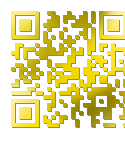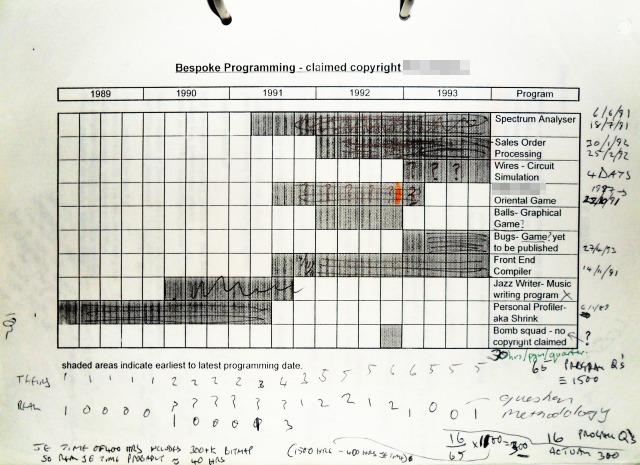
 |
|
| Mobile-sized | ||
| This site: | ||
| Home | ||
| Copyright | ||
| Let the Devil Wear Black: | ||
| Briefly. | ||
| ||
| Additional Resources... | ||
| James Linden: | ||
| Background | ||
| Contact | ||
Resources - Gannt Chart
Just how many things can someone work on at the same time?
Chapter 10
The claim that I had done 1,500 hours of work needed to be supported in some way so what better way than having a Gantt chart that showed when so-called 'development' on various projects was happening by taking a 'start' and 'finish' date for development and claiming that all of the time in between was taken up working on that project. Regardless of how many there might be at the same time and how fraudulent the start and finish times.
You can see that like many of the documents, it has been written on quite a lot as attempts have been made to make sense of their 1,500 hours claim as though it had been a calculation and it had been honest.
Along the bottom, you can see two rows of figures — one for the number of concurrent projects running in each quarter and the other for the number of projects that have actually had an associated file saved during that quarter.
The most striking, fundamental flaw you can see with this methodology — and unfortunately its only reason to exist — is that all you have to do is to cause a file to have a new time-stamp by saving it and it will be included as a whole quarter's work. This is something that manifests itself in all of the programs.
For example:
- Although I had been tweaking the screen-saver routines on the spectrum analyser program, the actual working part of it had been finished back in July 1991 therefore the last nine quarters of so-called 'development' on it were not at all. Also, it was started in June and finished in July but counting three month blocks would make it take six months — casting even more doubt on this arbitrary method;
- The same goes for the SOPS which had been developed on paper with modules that reused code — that means that you develop one and then just cut and paste the code, making a few minor edits to it to finish putting it in place — and only took less than four weeks of dinner times to put into working code;
- The WIRES (robot) program — like much of the programming that I do — had actually been written out on paper and took only four lunch times to type in and debug. The biggest problem with that though is not the fact that four days computer time was wilfully misrepresented as a year's work but that they rigged the date-time-stamp on the file so that it appeared to have been saved on 26th February 1993, some months before September that year when I was given the idea to write the program by Harry.
The date-time-stamp on the WIRES.EXE program on its own is prima facie evidence of company computer fraud;- The 'oriental game' was accepted for publication by the magazine in November 1991 — I have the magazine's acceptance card for it to prove it so the claim of continued development of that until the end of 1993 is false as well; and,
- And so it goes on . . .
As you can see at the bottom of the page, if they had been honest about the date-stamps but still counted whole quarters, their 1,500 hours would only have been 300 hours — still a long way from reality.
At worst, this chart shows that program files had been saved during the quarters and as such does not form any objective basis from which any supposedly 'honest' calculation of time worked could be calculated.
Incidentally, if you are not employed to do a particular job and you do that job unpaid, the company cannot claim copyright over what you do. For example, with permission of course, if you write a computer program during your unpaid lunch breaks and your job description could not include computer programming, the copyright on it remains your property. Copyright is a property right and as such others making claims on it is analogous to people taking something of yours and claiming ownership. Claiming ownership of copyright when the copyright belongs to another is theft.
How different it would have been if Deryck had fallen on his sword, along with the rest of the middle management of the apocalypse — a sort of management kebab but without the pineapple cubes.


